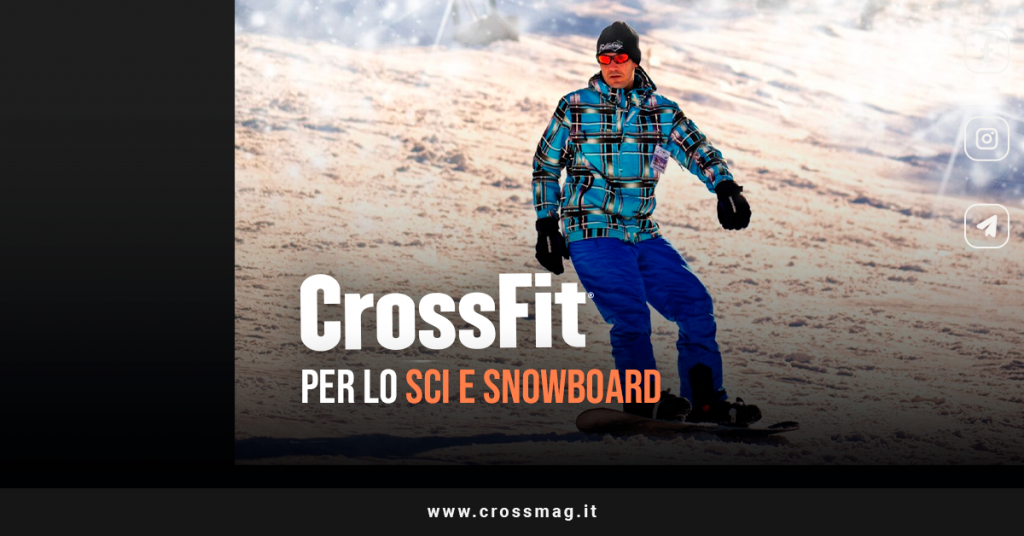When the winter period and the first snowfalls, that crazy desire to go skiing rises within us.
Already, the call of the ski week is felt.
There are quite a few injuries however, since muscles and ligaments are rusty after several months off the slopes. And you know, injuries like this can mean you miss an entire season, just because you didn't prepare beforehand.
That's why today let's see some targeted movements, to be fit for your descents on the snow since the first day!
Index
Which body parts need to be trained and why?
Il most important muscle is the core, which stabilizes the upper and lower body, helps to do the rotations and most importantly, protects the back from injury.
Also legs need to be trained, mainly in regards to endurance and explosiveness; for the upper body, it will serve the force to cushion impacts and help us get back up in the event of a fall to the ground.
They also serve varied cardio exercises because, like CrossFit®, skiing and snowboarding are activities that require a lot of energy, in a short period of time.
You can choose to run two types of training to train these muscle districts and each one has different characteristics:
- Tabata: This is an interval workout (HIIT), with a 2:1 ratio, that is, eight repetitions with work periods of 20 seconds of maximum effort followed by 10 seconds of rest.
- For Time: the goal is to perform the required number of repetitions within the set time, trying to finish as soon as possible.
Best movements to train the trunk/core
- GHD sit ups
- Abdominal plank
- hollow rocks
- Bridge
- Superman
- v-up
- High Plank Knee Crosses
- Toes to bar
- leg raise
- Crunch
Best moves to train legs
Best movements to train the upper body
Cardio for skiing and snowboarding: which one to choose?
Although the workout Tabata is already a spectacular cardio activity in itself, on other days you can add to workouts short runs of 200-400 meters.
It wouldn't hurt to do cardio as an active recovery day, a couple of days a week. As an activity you might consider jump rope for ten minutes, do 20-30 minutes of AirBike, Treadmill or rowing machine, at 60% of your maximum intensity.
Mobility, the key to our performance!
We suggest I strongly recommend that you train your mobility every day by running dynamic stretches two to four minutes for each muscle, best if performed after training because the muscles are warm.
Here are some examples:
- Shoulder rotation
- Neck rotation
- Pelvis rotation
- Foot and ankle rotation
- Knee rotation
- Lateral stretch
- Chest opening
- Hand to toes
- Knee rotation
- Good Morning
- Squats and back extensions
Basic exercises with elastic and PVC help a lot in the evolution of the lower, upper limbs and trunk. Moreover, the barbell itself can be used to perform some mobility exercises.
There are some apps, like the GOWOD, which allow for personalized work on mobility.

